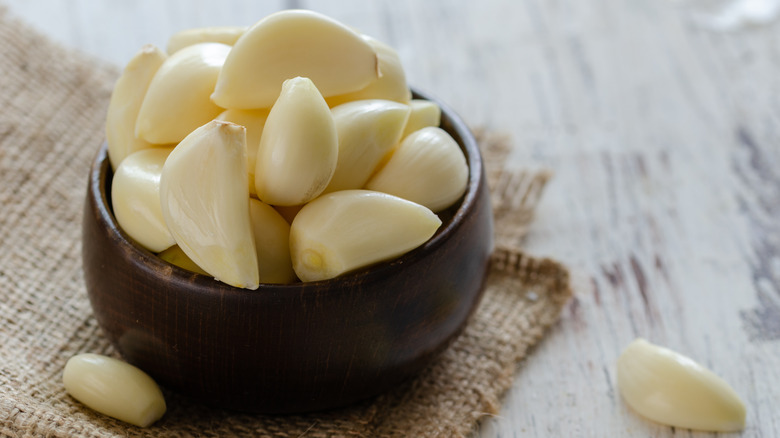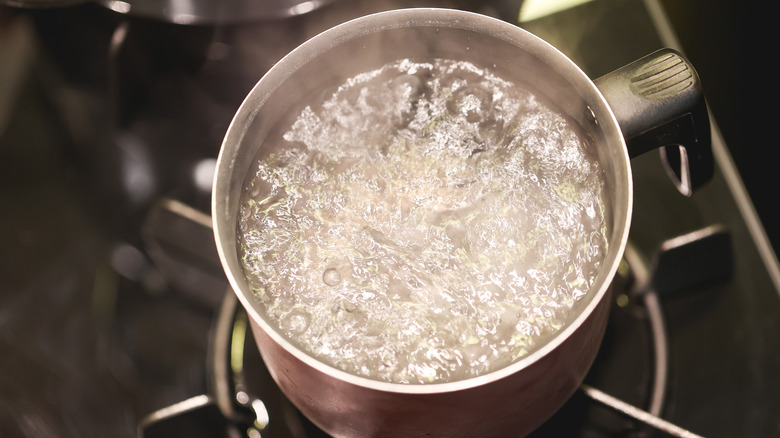Ina Garten's Pro-Tip For Peeling A Whole Bunch Of Garlic
With so many methods used to peel garlic, finding the right one is crucial for kitchen efficiency. Celebrated chef and TV show host Ina Garten understands this better than most, as her love of garlic means that she often uses massive amounts in her cooking. In a YouTube clip, Garten demonstrates how she easily peels a whopping 24 cloves of garlic while preparing penne arrabbiata, an Italian dish featuring penne pasta and a zesty, tomato-based sauce.
According to the Barefoot Contessa herself, blanching the garlic cloves prior to peeling them makes the process a breeze. Blanching involves placing fruits and vegetables in boiling water for a short period, then quickly tossing them into a bowl with ice water. This is called "shocking" and it stops the blanched foods from continuing to cook. After blanching, removing the outer skin from garlic cloves and other vegetables is far easier. However, blanching garlic also offers an additional benefit or possible deficit (depending on how you feel about the potent flavor).
Does blanching garlic affect its taste?
Along with making cloves so much easier to peel, blanching also reduces the intensity of the flavor of garlic. This is something to keep in mind if you're constantly looking for ways to get rid of garlic breath or if you want to include lots of garlic in a dish but don't want to overpower the other flavors.
Garlic gets its potent flavor and pungent reputation from allicin, a compound that gets more intense the more garlic is pulverized. In this case, cooking with an entire clove of garlic can actually result in a less powerful flavor, since food will be imbued with the essence of garlic while the allicin will remain under wraps. Conversely, mincing garlic releases lots of allicin, which means the flavor will be front and center in recipes. Blanching cloves prior to cooking them helps restrain the flavor of garlic but ensures it will still remain noticeable in dishes.
How long should you blanch garlic cloves?
According to Ina Garten's tip, the Food Network star recommends blanching garlic cloves for a brisk 15 seconds. However, other home cooks suggest blanching for up to one minute before removing the skin. Keep in mind that recommended cooking times vary according to the food being blanched. Something delicate like spinach leaves only takes 30 seconds, while more substantial cauliflower florets can take up to three minutes.
So, what happens if you blanch garlic or other vegetables for too long? You might accidentally alter the texture, which can lead to a much softer clove of garlic than you anticipated. And while the flavor tempering effects of blanching might be beneficial when done for a short time, allowing cloves to remain in the boiling water for too long can deprive them of their signature taste. Accordingly, it's probably best to follow Garten's instructions and err on the side of brevity. With this tip, you can experiment with lots of new ways to eat more garlic without spending all of your time peeling cloves.


